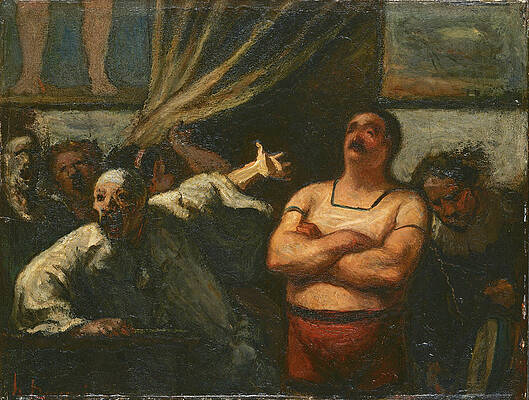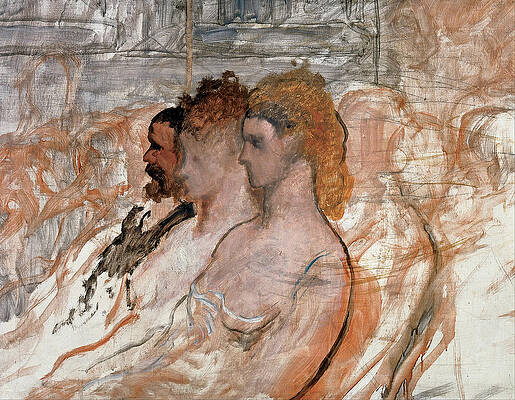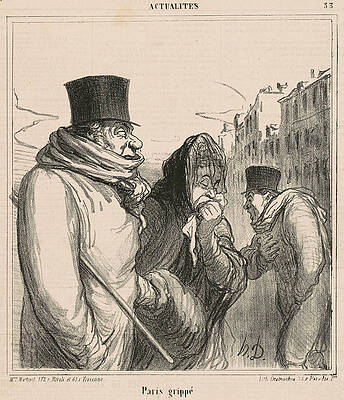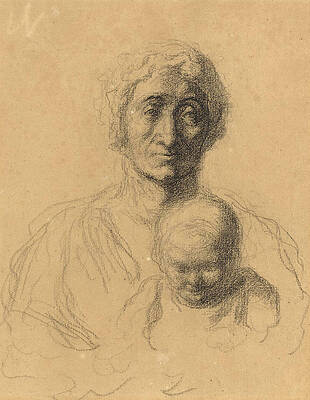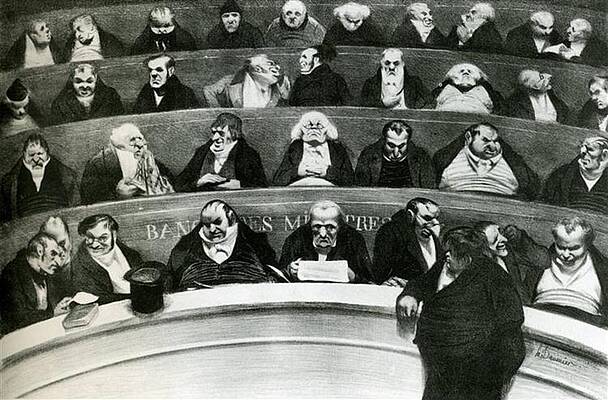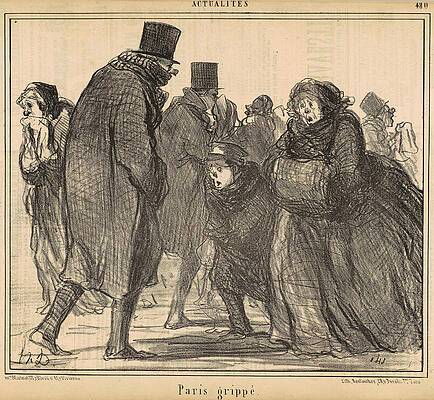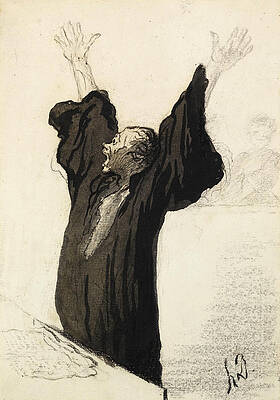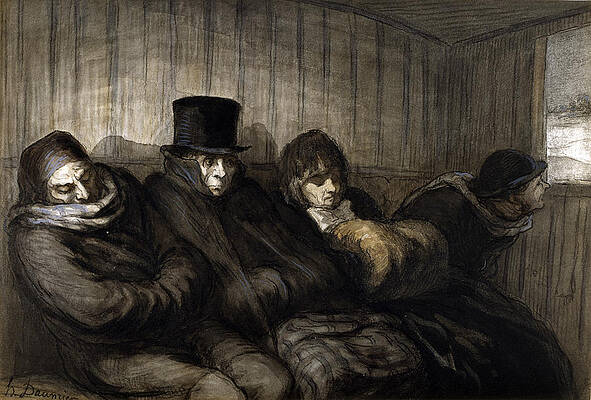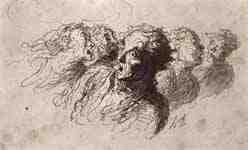Honoré Daumier
Paintings
The Laundress
The Third-Class Carriage
The Strong Man
Orchestra Stalls
Game of Checkers
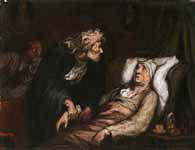

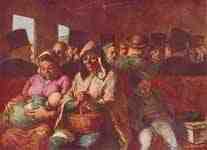
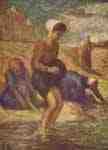
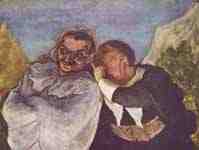

The artist in front of Notre-Dame
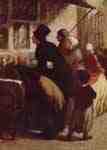
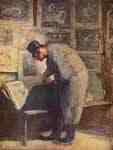
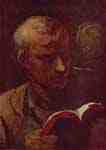
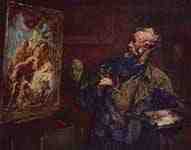
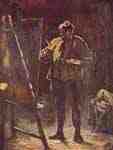

The Miller , His Son And The Donkey
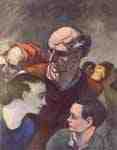
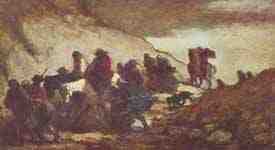



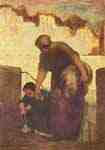
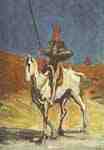
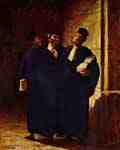
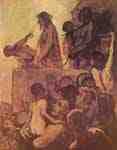
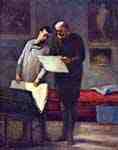
A young artist receives advice
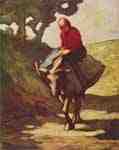
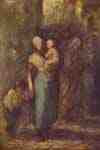
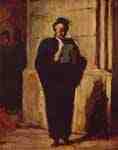
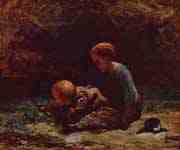
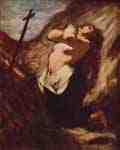

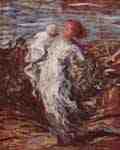


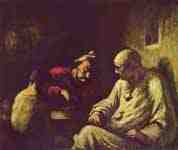
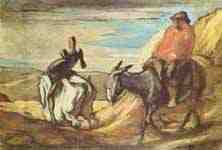
Sancho Panza and Don Quixote in the Mountain
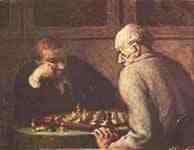
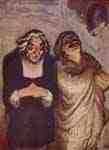
Scene from a comedy by Molière
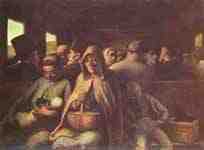
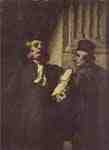
Drawings , Illustrations
Paris having a cold
Paris influenza
Mother and Child
The Baptism of Achilles
The Legislative Belly
Paris influenza 2
The Pathetic Advocate
The danger of wearing hoop-skirts
The Second Class Carriage
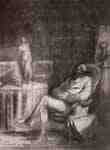
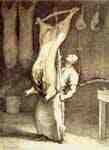


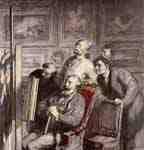
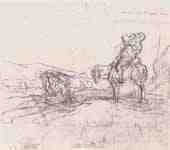
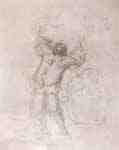

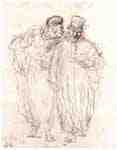
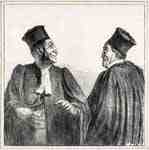
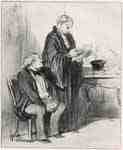
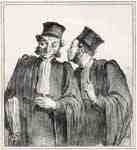
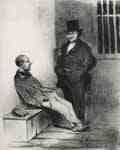
"If it would not only twelve thefts ! "
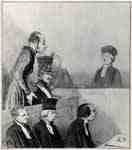
"What you have for living in the time in question ?
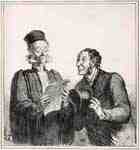
Its all there , just not advance payment

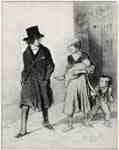
I'm sorry , I 'm in the club against begging.

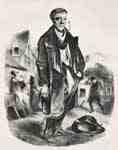
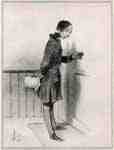

View from the basement to the upper world
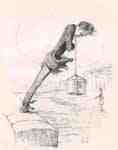
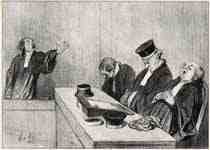
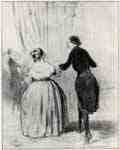
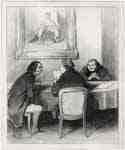
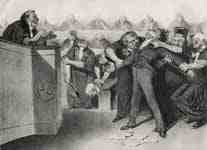
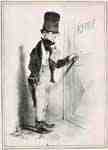

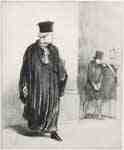
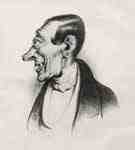
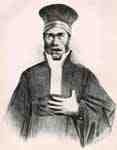
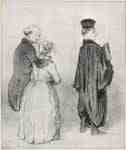
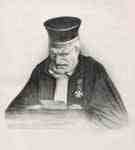
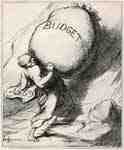
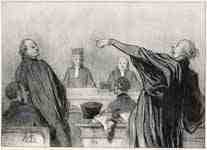

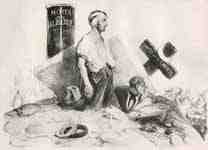
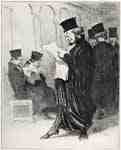
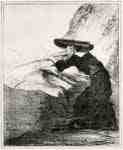
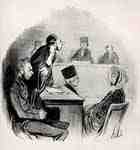

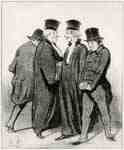
Lost only in two instances ...


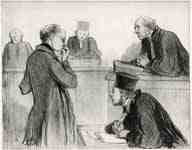
Witness ...
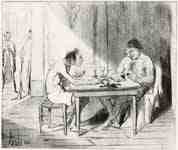
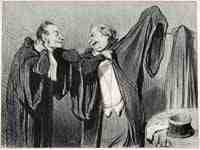

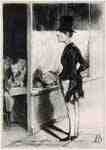

I have yet to see anyone die of hunger !
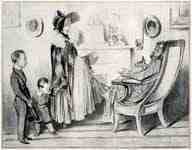
I accpet only childless tenants
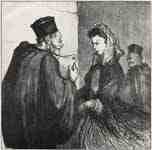
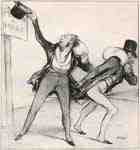
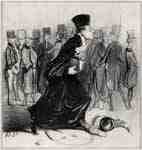
The smaller the practice , the wilder the practice
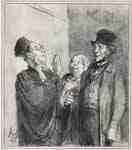
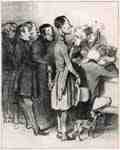

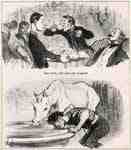
You drink because you're bored
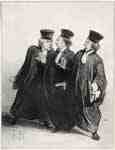
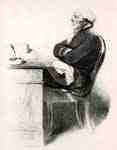
With 87 years in exceptional court
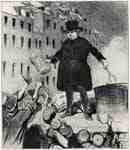
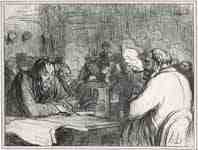
Only the liquor keeps the people together
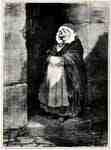
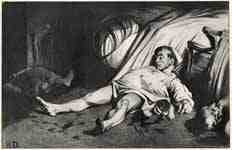

You have lost your process ...
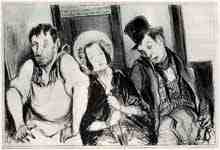


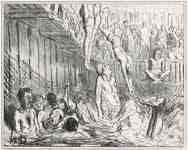
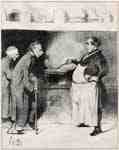
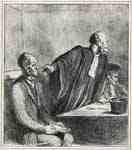
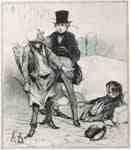
What's fellow man here? This is my house man!
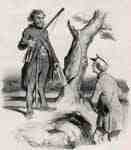
Honoré Daumier (French: [ɔnɔʁe domje]; February 26, 1808 – February 10, 1879) was a French printmaker, caricaturist, painter, and sculptor, whose many works offer commentary on social and political life in France in the 19th century.
Daumier produced over 500 paintings, 4000 lithographs, 1000 wood engravings, 1000 drawings and 100 sculptures. A prolific draftsman, he was perhaps best known for his caricatures of political figures and satires on the behavior of his countrymen, although posthumously the value of his painting has also been recognized.[1]
Life
Daumier was born in Marseille to Jean-Baptiste Louis Daumier and Cécile Catherine Philippe. His father Jean-Baptiste was a glazier whose literary aspirations led him to move to Paris in 1814, seeking to be published as a poet.[2] In 1816 the young Daumier and his mother followed Jean-Baptiste to Paris. Daumier showed in his youth an irresistible inclination towards the artistic profession, which his father vainly tried to check by placing him first with a huissier, for whom he was employed as an errand boy, and later, with a bookseller. In 1822 he became protégé to Alexandre Lenoir, a friend of Daumier's father who was an artist and archaeologist. The following year Daumier entered the Académie Suisse. He also worked for a lithographer and publisher named Belliard, and made his first attempts at lithography.
Having mastered the techniques of lithography, Daumier began his artistic career by producing plates for music publishers, and illustrations for advertisements. This was followed by anonymous work for publishers, in which he emulated the style of Charlet and displayed considerable enthusiasm for the Napoleonic legend. After the revolution of 1830 he created art which expressed his political beliefs.[3] Daumier was almost blind by 1873.
Published works
A lithograph of Daumier's Gargantua (1831)
During the reign of Louis Philippe, Charles Philipon launched the comic journal, La Caricature, Daumier joined its staff, which included such powerful artists as Devéria, Raffet and Grandville, and started upon his pictorial campaign of satire, targeting the foibles of the bourgeoisie, the corruption of the law and the incompetence of a blundering government. His caricature of the king as Gargantua led to Daumier's imprisonment for six months at Ste Pelagie in 1832. Soon after, the publication of La Caricature was discontinued, but Philipon provided a new field for Daumier's activity when he founded the Le Charivari.
Daumier produced his social caricatures for Le Charivari, in which he held bourgeois society up to ridicule in the figure of Robert Macaire, hero of a popular melodrama. In another series, L'histoire ancienne, he took aim at the constraining pseudo-classicism of the art of the period. In 1848 Daumier embarked again on his political campaign, still in the service of Le Charivari, which he left in 1863 and rejoined in 1864.
Around the mid-1840s Daumier started publishing his famous caricatures depicting members of the legal profession, known as 'Les Gens de Justice', a scathing satire about judges, defendants, attorneys and corrupt, greedy lawyers in general. A number of extremely rare albums appeared on white paper, covering 39 different legal themes, of which 37 had previously been published in the Charivari. It is said that Daumier's own experience as an employee in a bailiff's office during his youth may have influenced his rather negative attitude towards the legal profession.
In 1834 he produced the lithograph Rue Transnonain, 15 April 1834 depicting the massacre in the rue transnoin which was part of the April 1834 riots in Paris. It was designed for the subscription publication L’Association Mensuelle. The profits were to promote freedom of the press and defrayed legal costs of a lawsuit against the satirical, politically progressive journal Le Charivari to which Daumier contributed regularly. The police discovered the print hanging in the window of printseller Ernest Jean Aubert in the Galerie Véro-Dodat (passageway in 1st arrondissement) and subsequently tracked down and confiscated as many of the prints they could find, along with the original lithographic stone on which the image was drawn. Existing prints of Rue Transnonain are survivors of this effort.[4]
Sculptures
Daumier was not only a prolific lithographer, draftsman and painter, but he also produced a notable number of sculptures in unbaked clay. In order to save these rare specimens from destruction, some of these busts were reproduced first in plaster. Bronze sculptures were posthumously produced from the plaster. The major 20th century foundries were F. Barbedienne Barbedienne, Rudier (fr), Siot-Decauville (fr) and Foundry Valsuani (fr).
Eventually Daumier produced between 36 busts of French members of Parliament in unbaked clay. The foundries involved from 1927 on to produce a bronze edition were Barbedienne in an edition of 25 & 30 casts and Valsuani with three special casts based on the previous plaster castings from the Sagot-Le Garrec clay collection. These bronze busts are all posthumous, based on the original, but frequently restored unbaked clay sculptures. The clay in its restored version can be seen at the Musée d'Orsay in Paris.
From the early 1950s on, some baked clay 'Figurines' appeared, most of them belonging to the Gobin collection in Paris. It was Gobin who decided to have a bronze cast done by Valsuani in an edition of 30 each. Again, they were posthumous and there is no proof, in contrast to the busts mentioned above, that these terra cotta figurines really were done by Daumier himself. The American school (J.Wasserman from the Fogg-Harvard Museum) doubts their authenticity, while the French school, especially Gobin, Lecomte and of course Le Garrec and Cherpin, all somehow involved in the marketing of the bronze editions, are sure of their Daumier origin. The Daumier Register (the international center of Daumier research) as well as the National Gallery of Art in Washington DC would consider the figurines as 'in the manner of Daumier' or even 'by an imitator of Daumier' (NGA)
There can be no doubt about the authenticity of Daumier's Ratapoil and his Emigrants. The self-portrait in bronze as well as the amazing bust of Louis XIV have been frequently debated over the last 100 years, but the general tenor is to accept them as originals by Daumier.
Daumier created many of his own figurines that would later turn into paintings that were portrayals of the figurines. One of Daumier's most well-known figurines was entitled The Heavy Burden, and it featured a featured a woman and her child. The figurine is about 14 inches tall, which is relatively small. The woman looks like she is carrying something, possibly a large bag or large tote. Daumier wanted to portray this woman as a "washerwoman" or laundress. The woman and her child in the figurine also have very detailed faces, but the rest of their bodies and clothes look as if they are messed up, or even blown by the wind. Oliver W. Larkin states that "One sees in the clay the mark of Daumier's swift fingers as he nudged the skirt into windblown folds and used a knife blade or the end of a brush handle to define the clasped arms and the wrinkles of the cloth over the breast. In oil, he could only approximate this small masterpiece most successfully in two canvases were once owned by Arsene Alexandre." [5]
After constructing the figurine, Daumier then recreated The Heavy Burden many times. However, instead of remaking it through clay figurines, he decided to paint it. He used many different techniques to convey the message that he wanted to get across. Daumier also painted The Heavy Burden in multiple variations in order to show how he really felt about the subject at hand. The woman and her child look like they are being pushed by the wind, and Daumier used this as a metaphor of the greater forces they were actually fighting against. The greater forces that Daumier wanted to show that they were trying to fight were the Revolution, the government, and poverty. The woman and her child in the painting are outlined by a very dark shadow. The do not have definitive lines drawn around them, and they are not painted in very much detail. Daumier used very bold, dark colors such as black, brown, and gray in order to create an eerie scene. By doing this, he makes the viewer feel an emotional tie towards the woman and her child, almost in a sympathetic way.
Daumier makes the woman and her child look as if they are almost frightened by what they are running from. This is another reason that Daumier makes the woman and her child appear to be struggling to fight against the strong forces pushing against them. It shows that he is advocating for the rights of women in the workforce. During this time period in France (circa 1865), women were just now beginning to appear in the workforce. They were just being allowed to work compared to men who always were allowed to work. Instead of staying home with their children, women were now expected to get a job such as the laundress, and they were still expected to take care of their children. This is why Daumier decided to include the child with the mother in his sculpture and paintings to show how he felt about the problem with women having to do multiple jobs at once to help provide for their families. Daumier was a member of the Republican Party, and he wanted everyone to have the opportunity to have equal rights, including women.[6]
Paintings
Daumier later in his career.
In addition to his prodigious activity in the field of caricature — the list of Daumier's lithographed plates compiled in 1904 numbers no fewer than 3,958 — he also painted. Except for the searching truthfulness of his vision and the powerful directness of his brushwork, it would be difficult to recognize the creator of Robert Macaire, of Les Bas bleus, Les Bohémiens de Paris, and the Masques, in the paintings of Christ and His Apostles (Rijksmuseum in Amsterdam), or in his Good Samaritan, Don Quixote and Sancho Panza, Christ Mocked, or even in the sketches in the Ionides Collection at South Kensington. There is a room-full of caricatures in the museum Am Römerholz in Winterthur. Don Quixote and Sancho Panza was found as part of the 2012 Nazi loot discovery.[7]
As a painter, Daumier, one of the pioneers of realistic subjects, but treated with a very subjective point of view, did not meet with success until 1878, a year before his death, when Paul Durand-Ruel collected his works for exhibition at his galleries and demonstrated the range of the talent of the man who has been called the "Michelangelo of caricature". At the time of the exhibition, Daumier was blind and living in a cottage at Valmondois, which Corot placed at his disposal. It was there that he died. He painted about 500 oil paintings.
Legacy
Bust of Daumier by Adolphe-Victor Geoffroy-Dechaume (fr)
Baudelaire noted of him: l'un des hommes les plus importants, je ne dirai pas seulement de la caricature, mais encore de l'art moderne. (One of the most important men, I will not say only of caricature, but also of modern art.)
An exhibition of his works was held at the École des Beaux-Arts in 1901.
Today, Daumier's works are found in many of the world's leading art museums, including the Louvre, the Metropolitan Museum of Art and the Rijksmuseum. He is celebrated for a range of works, including a large number of paintings (500) and drawings (1000) some of them depicting the life of Don Quijote, a theme that fascinated him for the last part of his life.
Daumier's 200t
h birthday was celebrated in 2008 with a number of exhibitions in Asia, America, Australia and Europe.
Notes
"Honoré Daumier: A Finger on the Pulse". Hammer.ucla.edu. Retrieved 2013-02-23.
Rey, page 10.
Frusco, Peter, Janson, H.W., The Romantics to Rodin, George Braziller, Inc., 1980.
"Rue Transnonain, 15 April 1834". An Introduction to 19th Century Art. Retrieved 2014-10-07.
Larkin, Oliver W. (1966). Daumier, Man of His Time. New York, New York: McGraw-Hill.
http://www.museumwales.ac.uk/rhagor/revolutionary_dreams/
"Photo Gallery: Munich Nazi Art Stash Revealed". Spiegel. 17 November 2013. Retrieved 17 November 2013.
References
Rey, Robert, Honoré Daumier, Harry N. Abrams. ISBN 0-8109-0064-5
This article incorporates text from a publication now in the public domain: Chisholm, Hugh, ed. (1911). "Daumier, Honoré". Encyclopædia Britannica 7 (11th ed.). Cambridge University Press. p. 849.
---
Fine Art Prints | Greeting Cards | Phone Cases | Lifestyle | Face Masks | Men's , Women' Apparel | Home Decor | jigsaw puzzles | Notebooks | Tapestries | ...
---
Artist
A - B - C - D - E - F - G - H - I - J - K - L - M -
N - O - P - Q - R - S - T - U - V - W - X - Y - Z
Retrieved from "http://en.wikipedia.org/"
All text is available under the terms of the GNU Free Documentation License





